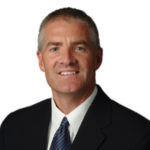“Every morning in Africa, an antelope wakes up. It knows it must outrun the fastest lion, or it will be killed. Every morning in Africa, a lion wakes up. It knows it must run faster than the fastest antelope, or it will starve. It doesn’t matter whether you’re a lion or an antelope—when the sun comes up, you’d better be running.”1 —Bernd Heinrich
The greatest mistake we sometimes make in financial services is believing that our industry is about money. It is not. It is about people. Nor is economics about money. It is a social science. It studies the implications of individual human actions and collective interactions. Economics is psychology and sociology.
Point: We are first and foremost an industry comprised of people who are concerned about other people and the uncertainty in their lives.
Question: Have you ever heard someone say, “Life is a hoot,” or, “What a hoot.”
These are expressions that mean “to be fun and a good time; to be funny.”
We hear people say, “it was a hoot and a half!” In other words, “very funny!”
We are in the financial services business because, frankly, life is not always a hoot.
Learning from Owls
The animal we most often associate with a “hoot” is the owl. According to naturalist Leigh Calvez, there are 642 owl species and subspecies in the world. I just finished reading her excellent book, “The Hidden Lives of Owls.”
I enjoyed reading about and encountering several species of owls in this well-written book. It is arranged by chapters that focus on Ms. Calvez’s exploration of various ecologies by owl species, as follows: the Northern Saw-Whet Owl, Flammulated Owls, Snowy Owls, Northern Spotted Owls, Barred Owls, Northern Pigmy Owls, Long- and Short-eared Owls, Great Horned Owls, and Great Gray Owls.
Interesting Owl Facts:
- “In a single year, one Great Gray Owl may eat as many as eighteen hundred rodents.”2
- After several years of study of Long-eared Owl pellets, “ornithologist Simon Birrer revealed 477 different species of prey… including 180 small mammal species, 191 small bird species, 15 reptiles, 83 insects, seven amphibians, and one fish.”3
- Owls have fourteen vertebrae in their necks as compared to our seven, which allows them to turn their heads “270 degrees without cutting off the blood’s circulation to the brain.”4
- Owl eyes “are power-packed with black-and-white nerve cells, called ‘rods,’ and a tapertum lucidum–the same mirror-like structure that causes cat or deer eyes to shine in the dark. This special layer of tissue reflects light back to the rods a second time, to the point that the owl’s night time world is brightened to what we would think of as cloudy daylight conditions.”5
- For most owl species the female is larger than the male, a trait known as “reversed sexual size dimorphism.”6
- Owls have talons designed for predation. They have “two toes on each foot pointing backward, one forward, and a fourth that can move either way – an advantageous structure for forceful grasping and squeezing of prey.”7
Point: Owls are fierce predators equipped with everything they need for survival.
Making the Connection
You may be wondering how owls relate to financial services. Glad you asked.
Author Leigh Calvez described herself this way: “As a single mother raising a daughter, I’d fallen into wrestling with the daily struggle to get through the day rather than embracing my life.”8 This is why she chose to spend a year studying owls. She expected to learn about owls, and to spend time in nature but, in the end, Ms. Calvez experienced transformation.
This happened while exploring the lives of Great Gray Owls in the northeastern corner of Oregon, in a mountain range called the Blue Mountains. With the help of a retired professor from Oregon State University, named Andy Huber, Ms. Calvez found a nesting pair of Great Gray Owls. The nest was well-camouflaged in a jumbled canopy in a tall Douglas fir. The female had been sitting on a clutch of eggs for about a month. Through binoculars, Ms. Calvez looked into the yellow-eyed gaze of the mother owl. “I wondered at the maternal dedication that would allow an animal to sit almost entirely still for weeks.”9
The chicks hatched. The male Great Gray was responsible for catching all the prey necessary to feed the chicks and the female. There were four chicks. One fell out of the nest and the naturalists placed it on a scaffold close to the nest. Baby Great Grays grow quickly. In just three weeks they are large, gray, steady, and wing-flapping bottomless pits.
Then tragedy happened. The father owl was killed, ironically, by a Great Horned Owl.
Each baby required four or more rodents per day in their diet. The provider was now dead. After this tragedy, the mother owl sat for days in a tree removed from the nest. Her bright yellow eyes were now sullen. She made no sound. She did not respond to the cries of her hungry chicks.
The naturalists and Ms. Calvez engineered a process of supplying live mice for the mother owl to catch and feed to her young. They intervened to save the family. Where before the father played the role of provider, the naturalists now took over.
The mother owl had to adjust to the circumstances and adapt her behavior to take mice in a new and strange way. Wrote Ms. Calvez: “I admired this owl not only for her beauty and power as a predator, but for her grace and fierce determination as a mother. I’d watched as she turned to us humans, trusting us in her time of desperation to help feed her hungry family. As a single mother trying to make ends meet, I could see my own life played out in hers…I sensed the devotion she felt for her children, as I felt for my child. I felt kinship with this great gray bird.”10
Point: Human beings, like owls, assemble in families and face exposure to risks of all kinds. When tragedy happens, they will often need outside assistance to survive.
Providing and Seeing
There is an ancient Hebrew word that holds instruction for all of us in financial services: yir·’eh. It means “to provide.” Interestingly, it also means, “to see,” or “to look.” It is a term used as a name for God. It can also be used to describe us.
In the case above of the Great Gray Owl mother in need, she received provision only because someone was literally watching over her. Thankfully, through persistence and wisdom, the naturalists managed to help the mother feed her chicks after the father/provider was killed.
Point: In Financial Services, we have the opportunity to get out in front of disaster and tragedy. Our diligence must happen now, and urgently, in the process of prospecting, pursuing client relationships, and wisely presenting sound plans of protection and provision. If we are going to help families survive setbacks, we must first see them.
Application
- Look for ways to help single parents provide for their children.
- Look for potential clients who are providers for dependents.
- Help them to see the fragility of financial stability and safety that their families face.
- Present reasonable, affordable solutions to provide families with amelioration for potential tragedy.
- See the people.
- Lastly, see the owl who comes.
The Owl Who Comes11 by Mary Oliver
The owl who comes
through the dark
to sit
in the black boughs of the apple tree
and stare down
the hook of his beak,
dead silent,
and his eyes,
like two moons
in the distance,
soft and shining
under their heavy lashes–
like the most beautiful life–
is thinking
of nothing
as he watches
and waits to see
what might appear,
briskly,
out of the seamless,
deep winter–
out of the teeming
world below–
and if I wish the owl luck,
and I do,
what am I wishing for that other
soft life,
climbing through the snow?
What we must do,
I suppose
is to hope the world
keeps its balance:
what we are to do, however,
with our hearts
waiting and watching–truly
I do not know.
What are we wishing for in regard to our clients who are living that soft life climbing through their days? How do we help them keep balance and equilibrium when tragedy happens? Are our hearts waiting and watching? Or, are we urgently acting and pursuing preemptive solutions?
Truly, because we do appreciate the wonder of our industry’s products, we do know what to do!
Summary
In 1850 English poet Alfred Tennyson wrote the poem, “In Memoriam.” He contrasts mankind’s faith and prayers with harsh reality. Although people have such splendid purpose in their eyes, they must contend with Creation’s final law—Nature’s “red tooth and claw.”
Our clients are in a race against forces that destroy and threaten their very lives. When the sun comes up, we’d better be running to see them before tragedy happens.
Again, Mary Oliver wrote: “Every night the owl with his wild monkey-face calls through the black branches, and the mice freeze and the rabbits shiver in the snowy fields—and then there is the long, deep trough of silence when he stops singing, and steps into the air.”
We never know whether it is sickness, disability, chronic illness, or death that is ready to step into the air and head for our clients in any given period of time.
We need to be seeing people now and proposing solutions while they are still in the “long, deep trough of silence.”
Footnotes:
- Why We Run: A Natural History, Ecco Publishing, May 7, 2002, ISBN-10: 0060958707.
- The Hidden Lives of Owls: The Science and Spirit of Nature’s Most Elusive Birds, by Leigh Calvez, Sasquatch Books; Illustrated edition (August 16, 2016), ISBN-10: 1632170256.
- Ibid.
- Ibid.
- Ibid.
- Ibid.
- Ibid.
- Ibid.
- Ibid.
- Ibid.
- http://yearsrisingmaryoliver.blogspot.com/2010/09/owl-who-comes.html.
- New and Selected Poems, Volume One, by Mary Oliver, Beacon Press; Reprint edition (April 15, 2004), ISBN-10: 0807068772.




























